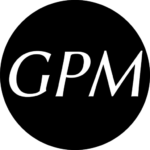Chiasmus
Toward a Crossing Rhetoric

We’re all familiar with examples of chiasmus. On the sentence level, it is the “reversal of grammatical structures in successive phrases or clauses” (Corbett & Connors, 1999) or the “ABBA pattern of mirror inversion” (Lanham, 1991), which creates a beguiling crisscross logic that recycles similar words or syntax to turn an idea on its head.
Ask not what your country can do for you—ask what you can do for your country.
(Kennedy)
Who dotes, yet doubts; suspects, yet strongly loves!
(Shakespeare)
The pattern can repeat and invert the same words (ask, your country, can do, you in the Kennedy quote above) or simply similar ideas (dotes/loves, doubts/suspects in the Shakespeare example).

The pattern can expand beyond the confines of a sentence to shape an entire text. Lund (1992), for example, has exhaustively diagrammed chiastic structures in the New Testament, while Miller (2016) has noted that Martin Luther King, Jr., influenced by Biblical psalms and contemporary poets, used chiastic parallelism to structure many of his speeches.

Despite its scalability to different “levels” of a text, chiasmus has most often been viewed as a rather limited rhetorical or literary curiosity, not relevant to more urgent questions about audience, context, and ethics that have concerned rhetorical theorists for centuries. However, I would like to recast chiasmus as more than a mere “figure of speech,” as it has most often been characterized. I would like to also imagine chiasmus as a more expansive rhetorical framework and generative topos that can guide our approach to composing and interpreting texts. This expansion and rewriting of chiasmus defines it as crossing rhetoric: rhetoric that is self-aware—perhaps even playful—about the ways it crosses/combines/inverts ideas, stances, languages, media, bodies, or other traditionally bounded systems.
In what follows, when I refer to chiasmus, I do not (only) mean the limited syntactic and organizational structures of the classical figure. My definition of chiasmus below is a definition of crossing rhetoric—that is, rhetoric that deliberately and self-consciously connects, mirrors, spatializes, highlights relationships, or leaves unresolved ambiguities. Crossing rhetoric is always attuned to the the gaps, the slippages and indeterminacies of meaning.
This webtext makes a case for this theory through its representation. It models a crossing rhetoric that invites interaction and in some cases ambiguity through the chiastic interweaving of media. In doing so, I hope that you dwell on not only the fragments but also in the space between fragments, where multiplicities of meanings might be created or discovered through interpretation.
In the remainder of this chapter, I present five fragments, each of which attempts to capture a facet of crossing rhetoric by drawing inspiration from the familiar rhetorical form of chiasmus.
© Gabriel Morrison, 2021

